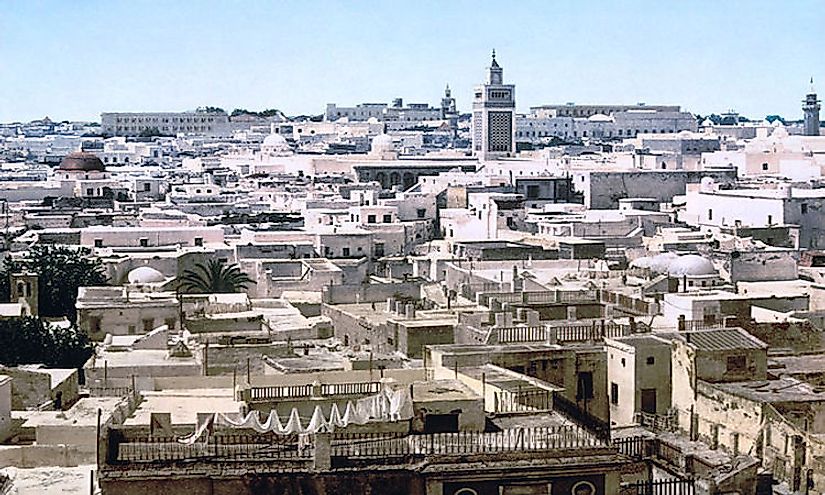Biggest Cities In Tunisia

Where Is Tunisia?
Tunisia is located in North Africa and covers an area of 63,170 square miles. This country shares borders with Algeria, Libya, and the Mediterranean Sea. Along its coast, Cape Angela is the northernmost point of the country and on the continent. Within Tunisia are the Atlas Mountains and the Sahara Desert. It has a total population size of 10,982,754. Many of the country’s residents live in urban areas. This article takes a look at some of the most populated cities in Tunisia.
Biggest Cities In Tunisia
Tunis
The most populated city in Tunisia is Tunis, the capital. It has a population size of 1,056,247 and 2,700,000 in the entire metropolitan area. The Lake of Tunis separates this city from the Mediterranean Sea. This area has been populated since at least the 2nd century BC, and because of its strategic hillside position, it was an important viewpoint for spotting approaching ships. The city was rebuilt under Islamic control; the oldest part of Tunis is the medina, built during this time. In 1159, this city became a provincial capital, and in 1228, it became the capital of the kingdom. It has been occupied by the Spanish, the Ottoman Empire, and the French, always playing an important political and administrative role. The country became independent in 1956 and Tunis remained the capital. Since then, this city has undergone significant development. Today, the economy relies on carpets, olive oil, wine, and textiles while the financial sector is beginning to surpass industry in importance.
Sfax
Sfax is the second most populated city in the country. It has a population of 330,440 and is located on the coast approximately 170 miles southeast of Tunis. Sfax was established in 849 AD and was influenced by several invading cultures. During World War II, the city played an important role. It was first a base for Axis powers, then taken over by British forces, and finally returned to France after the war. Because it is a port city, the trade and fishing industries are vital to its economy. In addition, this city produces nuts, olives, olive oil, and phosphate.
Sousse
The third most populated city in Tunisia is Sousse. It has a population of 271,428. This city is located along the Mediterranean about 87 miles south of Tunis. The history of Sousse dates back to at least the 11th century BC when it was first established by the Phoenicians. Under Islamic rule, this city was the principal seaport. The distinct Arab influence has remained throughout the years, and today, Sousse has some of the most well-preserved, sea-facing fortifications built by them. Tourism makes up a substantial part of the economy although the city also produces olive oil.
Other large, Tunisian cities can be found in the chart below.
Urbanization Of Tunisia
After World War II, rural residents began to move into urban areas in search of economic activities. This movement increased after independence. Many of these individuals moved into marginal, underdeveloped communities surrounding the cities - a problem that continues today. These underdeveloped communities have no proper sanitation systems. Local governments have responded with city planning to counteract the effects of rapid population growth although improvement is slow. This rapid urbanization has had detrimental effects on the environment, including increased carbon dioxide emissions. In Tunisia, fossil fuels are affordable, and renewable resources are not as competitive. The government has, however, enacted the Program for Promotion of Solar Thermal Energy Plant in an attempt to reduce these emissions.
The Biggest Cities In Tunisia
| Rank | City | Population |
|---|---|---|
| 1 | Tunis | 1,056,247 |
| 2 | Sfax | 330,440 |
| 3 | Sousse | 271,428 |
| 4 | Ettadhamen | 196,298 |
| 5 | Kairouan | 186,653 |
| 6 | Gabès | 152,921 |
| 7 | Bizerte | 142,966 |
| 8 | Aryanah | 114,486 |
| 9 | Gafsa | 111,170 |
| 10 | El Mourouj | 104,538 |







